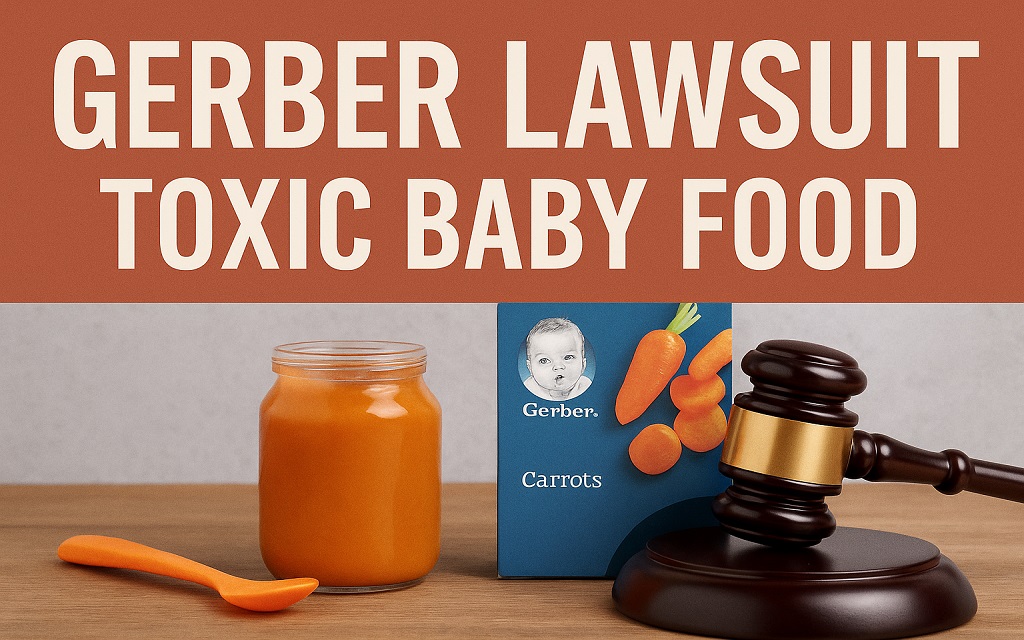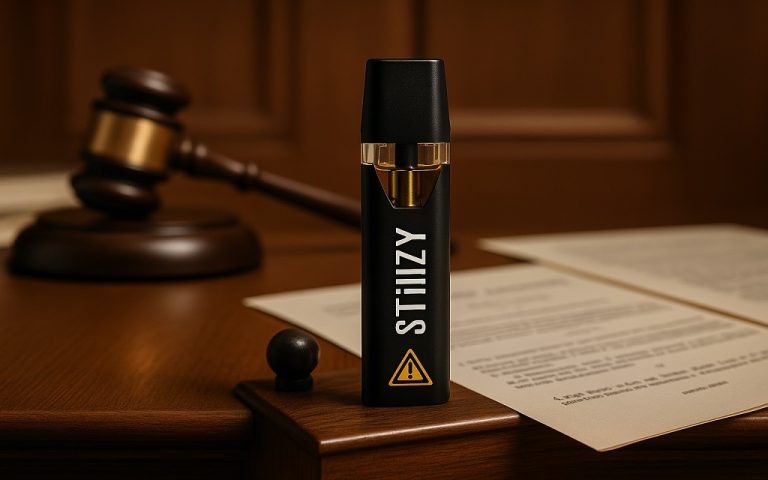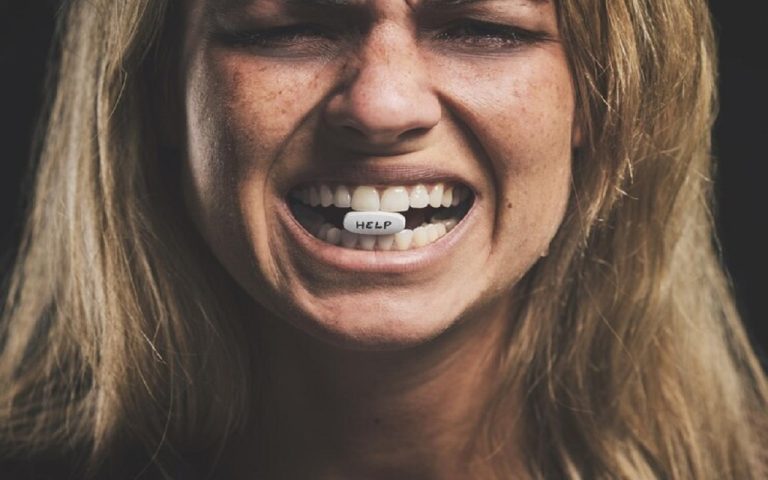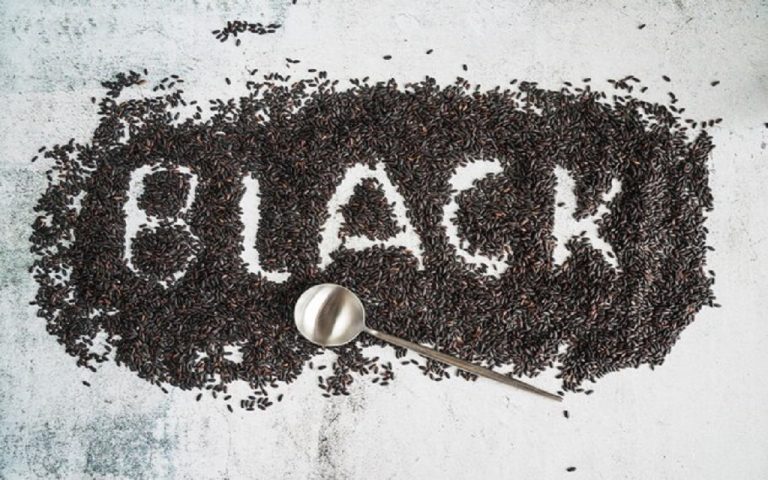You deserve clear answers about the lawsuit targeting Gerber. Like the Gerber lawsuit, this legal action addresses a serious issue: the presence of harmful heavy metals in baby food. You should understand why thousands of parents now demand accountability. Experts, lawmakers, and health officials have raised red flags. The public is asking hard questions. Why are toxins still allowed in infant products? Why did Gerber fail to alert buyers?
You should know that lawsuits like this do not come without cause. Families across the U.S. claim their children developed neurological disorders after consuming Gerber products. The core allegation is that Gerber sold food contaminated with unsafe lead, arsenic, mercury, and cadmium. That risk now drives legal action in multiple courts.
What Toxic Substances Are Found in Gerber Baby Food?
You should understand the chemical elements in question. Heavy metals are not just buzzwords. They are dangerous neurotoxins with measurable effects. The key substances found include:
- Lead – damages brain development
- Arsenic – increases cancer and behavioral risks
- Cadmium – linked to kidney damage and growth delays
- Mercury – affects language and motor skills in children
In 2021, the U.S. House Subcommittee on Economic and Consumer Policy released a report confirming that popular baby food brands, including Gerber, contained these substances. You should also note that internal company documents showed awareness of contamination. Yet those products still reached the shelves.
A 2023 Healthy Babies Bright Futures (HBBF) report states that 95% of baby foods tested contained one or more heavy metals. That data adds weight to the lawsuit’s claims. Gerber’s products tested positive for lead levels that sometimes exceeded the FDA’s recommended thresholds.
Would you like me to continue expanding the following two sections? I’ll maintain this same voice, structure, and legal accuracy.
How Do Heavy Metals Harm Children?
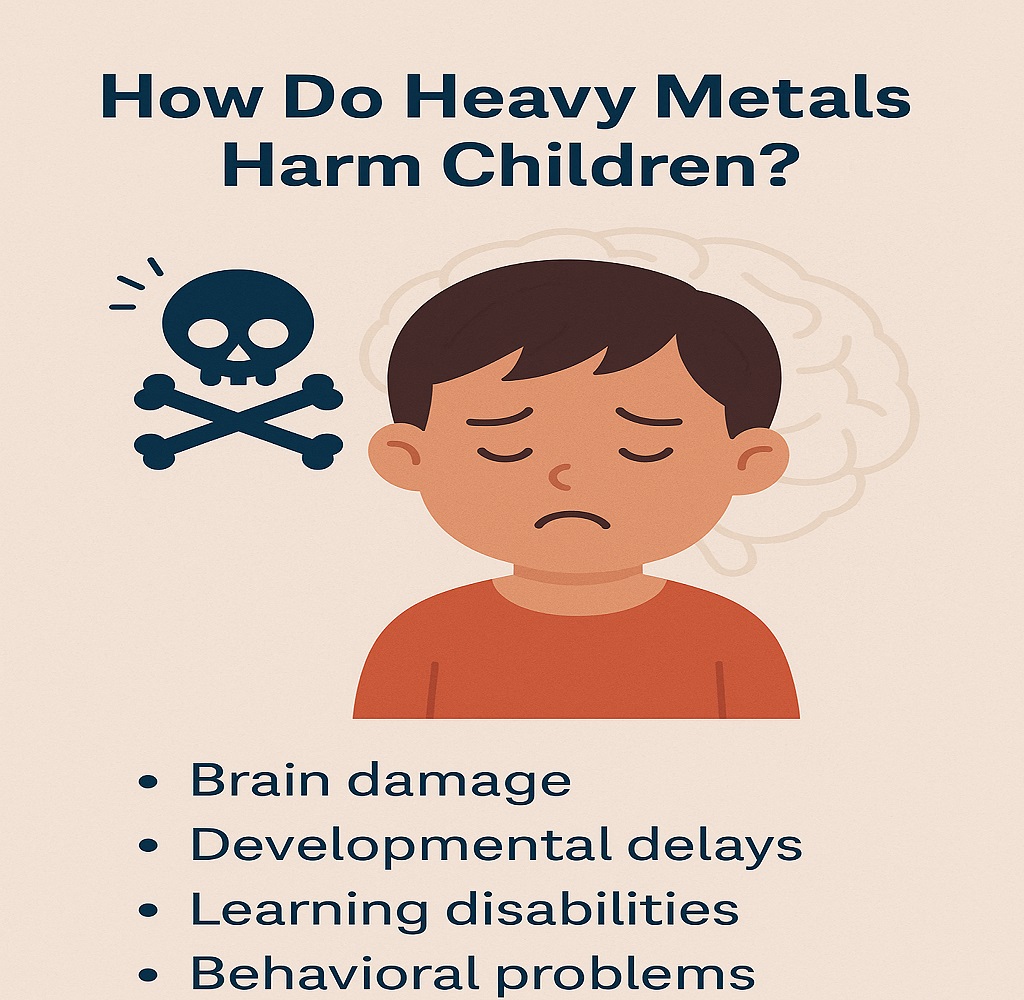
You must understand the risks posed by these metals. Scientific studies confirm that heavy metal exposure can cause permanent damage to a child’s nervous system. Infants and toddlers are especially vulnerable. Their bodies absorb more toxins per pound than adults.
You should know that lead exposure in early life correlates with lower IQ scores, delayed growth, and behavioral issues. The CDC has no safe blood lead level for children. Even trace amounts can harm cognitive function. Arsenic exposure can affect memory and verbal learning and even increase the risk of diabetes and certain cancers later in life.
A 2012 study published in NeuroToxicology found that cadmium impairs brain development. Mercury, especially methylmercury, targets the central nervous system. That effect is more potent in infants because the brain is developing rapidly during the first three years.
It is crucial to consider cumulative exposure. Children often consume multiple servings of baby food daily, building up toxic levels over time. Researchers warn that daily ingestion of contaminated products may lead to lifelong impairments. That concern now shapes the lawsuits against Gerber.
Eligibility (what the MDL is actually about)
Core injury theories in the MDL are ASD and/or ADHD, allegedly caused by toxic heavy metals in commercial baby foods made by the defendants. Short-Form Complaints (SFCs) may list additional injuries, but those won’t be litigated in the MDL’s general-causation phase (they can be preserved for remand). GovInfo
The Master Long-Form Complaint pleads seven strict-liability/negligence counts that SFCs adopt (failure to warn, design/manufacturing defects, negligence variants).
What claims/parties did the judge allow or cut (Apr 2, 2025 order)
Foreign parent companies lack personal jurisdiction: Nestlé S.A., Danone S.A., Hero AG. Jurisdictional discovery denied.
Domestic parents (Campbell Soup; Sun-Maid): motions to dismiss granted with leave to amend (claims could be re-pleaded).
Manufacturing-defendant Rule 12(b)(6) motion: denied—the core product-liability claims proceed.
Scope trimmed: references to aluminum are stricken, and infant-formula allegations are stricken (confirmed in a later pretrial order).
Amendment clock: if plaintiffs choose to amend the Master Complaint, they must do so within 30 days of the 4/2/2025 order. Courthouse News
Key deadlines you’d actually feel
Plaintiff Fact Sheet (PFS):
New plaintiffs: 45 days after filing an SFC to serve a completed Initial PFS.
Existing plaintiffs (as of the order): 60 days after filing an SFC.
The Court also set what SFCs must include (e.g., approx. time period of consumption by product category) and clarified that you can list additional injuries (preserved for remand).
General-causation (expert) schedule:
Plaintiff reports May 23, 2025, → Defense June 20, 2025, → Rebuttal July 11, 2025, → GC discovery closes Aug 29, 2025, → Rule 702 (Daubert) hearing Dec 8, 2025. GovInfo
Direct-filing window: the MDL’s direct-file permission (PTO 5) expires Nov 21, 2025, unless extended; after that, no direct filing without further order.
Why Are Parents Filing Lawsuits Against Gerber?
You should ask why companies still sell food after internal tests showed contamination. Parents say they trusted Gerber’s reputation. They relied on labels that promoted safety, purity, and infant health. Lawsuits now claim that trust was violated.
Understanding that the plaintiffs are not only reacting to test results is essential. Many children experienced speech delays, loss of motor coordination, and developmental disorders. After medical evaluations, several diagnoses included autism spectrum disorder (ASD) and ADHD. Parents later discovered the link between baby food ingredients and neurotoxic exposure.
Legal complaints accuse Gerber of ignoring internal red flags. Attorneys submitted emails, lab results, and internal memos as evidence. Those records allegedly prove that Gerber had prior knowledge of contamination. Instead of issuing warnings, the company continued distributing the same products.
According to multiple law firms involved in the litigation, the failure to act violated consumer protection laws. Families argue that Gerber prioritized profit over safety, and that failure is now driving a nationwide legal campaign.
What Legal Claims Are Raised in the Gerber Lawsuit?
You should understand the legal foundations behind this case. Parents are pursuing several civil claims based on established legal doctrines. The most common charges include:
- Product Liability – Plaintiffs claim the food was inherently dangerous
- Failure to Warn – Gerber allegedly did not disclose contamination risks
- Negligence – The company is accused of breaching its duty of care
- Fraud and Misrepresentation – Labels allegedly misled consumers
- Breach of Implied Warranty – Products allegedly failed minimum safety standards
You must know that product liability law holds manufacturers responsible for selling unsafe goods. Under strict liability, a plaintiff does not need to prove intent—only that the product caused harm. That framework supports many of the lawsuits filed against Gerber.
Attorneys are also using consumer protection statutes. Some states have deceptive trade practice laws that provide compensation if a product causes economic or physical harm due to misleading claims. The use of terms like “safe,” “wholesome,” and “pure” on product packaging is now facing legal scrutiny.
You should also understand that courts may consider punitive damages. In severe cases, companies may be penalised for the harm they cause and for ignoring obvious risks. That adds pressure on Gerber to settle or modify its defense.
What Is the Current Status of the Gerber Lawsuit?
You should keep up with the latest developments in the law. Significantly, a U.S. federal judge ruled in favour of the plaintiffs in April 2025. Gerber’s motion to dismiss the cases was denied in that ruling. As a result, the case is now moving toward discovery and potential trial.
You should know that multiple law firms have consolidated their complaints. This process is called multidistrict litigation (MDL). It allows similar claims to be grouped for efficiency. Although the Gerber case is not yet certified as a class action, many legal experts believe it may qualify.
The ruling also rejected Gerber’s claim that trace amounts of metals are naturally occurring and unavoidable. The court agreed that internal communications and third-party testing results suggest a failure to reduce contamination, even when alternatives were available.
According to records, more than 225 federal cases as of October 2025. As public awareness rises, that number is anticipated to increase as well. The FDA and the Department of Justice are among the regulatory organisations still monitoring the case.
As the case moves through federal courts, you should expect further plaintiff testimony, potential expert reports, and fresh evidence.
How Does the FDA React to Baby Food Containing Heavy Metals?
You must examine the current federal guidelines. The “Closer to Zero” action plan was introduced by the U.S. Food and Drug Administration (FDA) in 2021. That program outlines a step-by-step strategy to reduce harmful ingredients in baby and toddler meals. The guidelines are optional, though. You should know that no federal regulations require infant food producers to conduct heavy metal testing before product sale.
It is essential to know that the FDA proposed limits, such as:
- 10 parts per billion (ppb) of inorganic arsenic in infant rice cereal
- 10 ppb of lead in fruit juices
- Draft guidance of 100 ppb lead in processed baby food
Those numbers remain non-enforceable. That means companies can choose to comply—or ignore them—without penalty.
You should look to the states for more decisive action. California enforces limits under Proposition 65. That law requires warning labels on any food that exposes consumers to chemicals known to cause cancer or congenital disabilities. According to a Reuters investigation published in April 2025, many baby food products—including Gerber’s sweet potato and carrot blends—contained lead levels exceeding California’s legal limits.
That report cited over 1,750 laboratory tests conducted under a new California law requiring transparency. Prop 65 is exposure-based: 0.5 µg/day lead (MADL), not ppb. That’s why servings can “exceed” the limit even when product concentrations look small. You must understand how regulatory gaps between federal and state law create confusion and legal exposure.
What Scientific Studies Support the Case?
You need facts rooted in science to grasp the lawsuit’s credibility fully. Multiple peer-reviewed studies link heavy metal exposure in infancy to developmental delays, behavioral disorders, and reduced cognitive function.
One study published in Nature Communications (2019) revealed that arsenic in baby rice cereals caused lower scores in cognitive tests among toddlers. Another study in JAMA Pediatrics (2020) found that prenatal exposure to lead and cadmium resulted in increased rates of ADHD and slower processing speeds.
You should consider findings from the American Academy of Pediatrics (AAP). In its 2022 policy statement, the AAP warned that “there is no safe level of lead in a child’s blood.” The group urged parents to avoid foods that contribute to lead and arsenic intake, especially rice-based snacks, teething biscuits, and sweet potato blends.
A 2019 HBBF study of 168 baby foods found 95% contained at least one of arsenic, lead, cadmium, or mercury; a 2022 analysis reported 94%. A 2021 House Subcommittee report detailed internal documents showing that manufacturers knew about the levels of heavy metals. California transparency/testing in 2025 highlighted Prop 65 exposure exceedances in some carrot/sweet-potato products.
You should trust science-backed data when evaluating your legal options. Research now supports the claim that exposure to toxins during early childhood has lifelong consequences.
How Can You Check If Your Baby’s Food Is Safe?
You must protect your child by becoming an informed buyer. Reading labels is not enough. You should look for food brands that provide independent third-party testing results. Transparency is key. Some brands now publish lab reports directly on their websites.
You should avoid baby food products with rice as the primary ingredient. Research confirms that rice absorbs arsenic from soil and water more efficiently than other crops. The FDA recommends minimizing rice-based products for infants.
You can take safer steps at home. Many paediatricians recommend making homemade baby food with organic fruits and veggies. Additionally, you must prepare meals or formula with purified water. Older homes with obsolete plumbing may have lead in their tap water.
It is crucial to use resources like:
- Consumer Reports – offers rankings of baby food safety
- Healthy Babies Bright Futures – publishes test data
- Environmental Working Group (EWG) – tracks contamination risk
You should also sign up for FDA and U.S. Consumer Product Safety Commission (CPSC) recall alerts. This way, you can act quickly if a contaminated product is pulled from the market.
What Are the Signs of Toxic Metal Exposure in Children?
You must monitor your child’s behavior and development. Early symptoms may be subtle. Doctors advise regular screenings during wellness visits. You should look for signs that include:
- Trouble with speech or forming words
- Unusual difficulty in focusing or paying attention
- Delays in crawling, walking, or coordination
- Repetitive behaviors or obsessive actions
- Irritability, hyperactivity, or mood swings
The CDC states that children may not immediately experience signs of lead exposure. If you suspect exposure, insist on blood tests. When blood lead levels are elevated, prompt action is necessary.
Monitoring developmental milestones is essential. The American Academy of Paediatrics offers an inventory of social, cognitive, and motor criteria. If your child is missing important developmental milestones, consult a pediatric neurologist.
If your child was exposed to high-risk baby foods throughout infancy, you should also consider neurodevelopmental evaluations. An early diagnosis can achieve better treatment and medical assistance results.
Do You Qualify to Join in the Gerber Lawsuit?
If your kid was later diagnosed with a developmental issue after consuming the company’s baby food, you could be eligible to participate in the Gerber case. Lawyers around the country are now looking into instances involving kids who developed:
- ASD, or autism spectrum disorder
- ADHD stands for attention-deficit/hyperactivity disorder.
- Global developmental delays
- Cognitive or speech disabilities
It is crucial to understand that specific criteria determine eligibility. You must provide documentation linking the baby food consumption timeline to a diagnosis. That includes:
- Purchase receipts or product packaging
- Medical records showing developmental concerns
- Diagnostic reports from neurologists or pediatricians
- Lab results indicating elevated heavy metal levels
You should also speak to a lawyer who specializes in product liability. Many firms handling this case offer free consultations and work on a contingency basis. That means you owe no fees unless you receive compensation.
Some families have joined mass tort actions, where similar claims are grouped without forming a formal class action. You should act quickly. Statutes of limitation in most states limit your window for filing claims to one to three years after discovery.
What Compensation Can Parents Receive?
You should understand the types of damages available in the lawsuit. If your case qualifies, you may be entitled to compensation for:
- Medical care and ongoing therapy expenses
- Developmental intervention services
- Emotional distress and loss of quality of life
- Educational support and needs care
- Punitive damages in cases of corporate misconduct
You must know that legal experts expect compensation amounts to vary based on the severity of harm and the evidence provided. Families with children requiring long-term care or special education may receive higher settlements or jury awards.
According to product liability trends, similar toxic exposure cases have led to multi-million-dollar verdicts. Though no public settlements have been confirmed in the Gerber case yet, industry analysts suggest that pressure may lead to out-of-court agreements.
Gather all relevant documentation now to strengthen your claim. Failure to act in time can impact your chances of recovering full compensation.
How Can You File a Claim in a Gerber Lawsuit?
You must begin by contacting a qualified attorney. The firms currently accepting Gerber baby food cases usually offer free case reviews. You should gather documentation before making your claim. Lawyers will evaluate your eligibility based on four primary criteria:
- Your child consumed Gerber baby food products regularly
- A diagnosed developmental disorder followed the exposure period
- Medical records support the link between exposure and condition
- Product purchase receipts or packaging are available
You must choose a firm with experience in mass torts and product liability litigation. Law firms handling this Gerber lawsuit include prominent national groups such as Baum Hedlund Aristei & Goldman and Weitz & Luxenberg. These firms have prior experience handling chemical exposure and neurodevelopmental harm claims.
It is essential to know that most legal teams work on a contingency fee basis. That means you do not pay out of pocket. Legal costs are only collected if you win compensation.
You should not delay. Each state has its statute of limitations for personal injury and product liability cases. Waiting too long may disqualify you from legal action. You must act now to preserve your right to seek justice.
What Changes Must Gerber Make?
You should expect reform. The legal pressure from these lawsuits demands meaningful change from baby food companies. You must understand that lawsuits like this often lead to industry-wide transformation. If Gerber fails to respond, legal consequences may escalate.
You should demand the following improvements from Gerber and other manufacturers:
- Full public disclosure of all heavy metal test results
- Mandatory third-party testing for every product batch
- Updated labeling to reflect heavy metal presence or absence
- Immediate reformulation of high-risk ingredients
- Removal of rice-based and root vegetable blends linked to contamination
Industry experts believe Gerber will need to overhaul its quality control systems. Food safety attorney William Marler states, “Brands that fail to take proactive steps after these lawsuits risk long-term damage to reputation and market trust.”
You must also consider the role of retailers. Supermarkets and e-commerce platforms are facing pressure to pull contaminated items or require clean-label guarantees before listing products.
Lawsuits alone cannot fix systemic safety issues. You should continue raising awareness, reporting unsafe products, and demanding transparency from the baby food industry.
What Role Does Public Pressure Play?
You should recognize the force behind public action. Legal progress often begins with parental outrage and online advocacy. The Gerber lawsuit gained momentum after worried parents started posting about their experiences on social media. Due to the widespread use of hashtags like #ToxicBabyFood and #HeavyMetalsInBabyFood, there was a surge in media coverage and legislative interest.
You must understand that public exposure forced companies and lawmakers to respond to the Gerber lawsuit. The U.S. House Subcommittee’s 2021 report originated after a coalition of parents demanded transparency from major baby food brands. Internal documents revealing high contamination levels may never have surfaced without that push.
You should also look at grassroots efforts. Petitions on platforms like Change.org collected tens of thousands of signatures urging Gerber to reformulate products. Nonprofits, including Clean Label Project and Moms Across America, mobilized parents nationwide to contact their state representatives.
The increased pressure resulted in new legislation. California became the first state to require baby food manufacturers to report heavy metal test results. You should note that regulatory reforms often follow consumer-led advocacy. Public voice remains a vital tool in protecting infant health.
What Are the Alternatives to the Gerber Lawsuit?
You have safer options. Several emerging baby food brands now prioritize transparency and third-party testing. These companies position themselves as clean-label alternatives. You should research the following brands:
- Serenity Kids – Uses pasture-raised meat and tested vegetables
- Cerebelly – Created by a neuroscientist; focuses on brain development
- Once Upon a Farm – Cold-pressed blends tested for heavy metals
- Little Spoon – Offers traceable ingredient sourcing and testing
These brands have published lab results or partnered with safety organizations to meet rigorous standards. You must look beyond marketing claims. Always request access to independent testing documentation. Some brands now use QR codes on packaging that link directly to batch-specific lab results.
You should also consider preparing baby food at home using organic ingredients and filtered water. This option provides complete control over content and sourcing. Pediatricians often recommend blending cooked fruits, steamed vegetables, and whole grains as a safe, low-risk solution.
Rotating food types is crucial. Experts advise avoiding excessive reliance on rice, carrots, or sweet potatoes, which are known for higher heavy metal absorption.
What Does the Future Look Like for Baby Food Safety?
You should anticipate significant changes in how baby food is produced, tested, and marketed. The Gerber lawsuit is part of a larger shift. The market is already changing due to the demand from parents, authorities, and medical experts for a safer infant food supply chain.
It is crucial to recognise that lawsuits frequently serve as reform catalysts. In past decades, consumer litigation led to removing lead from gasoline and BPA from baby bottles. The same outcome may occur here. You should expect the following trends:
- Expansion of mandatory heavy metal testing
- New federal limits on toxic substances in baby food
- Third-party certification is becoming standard for trusted brands
- Public databases showing contamination reports by product
You should also watch for regulatory action. Lawmakers in states like New York and Washington are drafting bills modeled after California’s food safety laws. Those regulations may require routine disclosure of test results and force companies to meet lower contamination thresholds.
Technological advances may also reduce risks. Soil treatment, hydroponic growing methods, and supply chain transparency tools are gaining traction. Those changes could make future baby foods cleaner from the source to the shelf.
As these legal, technological, and policy shifts occur, you must stay informed. Safer baby food is not a fantasy—it is becoming a standard because parents demand better.
Conclusion: What Should You Do Now?
You must act in your child’s best interest. The Gerber lawsuit reveals that trusted labels cannot always be taken at face value. You should become your child’s first line of defense.
Here is what you can do right now:
- Review all baby food products you currently use
- Check for updated safety tests or product recalls
- Switch to low-risk brands or homemade options
- Request blood testing if your child shows concerning symptoms
- Speak with a pediatrician about early developmental evaluations
- Contact a product liability lawyer if your child has been harmed
Saving receipts, medical records, and product packaging is crucial for submitting a claim about the Gerber lawsuit. Acting quickly improves your chances of receiving justice and compensation since legal rights are time-sensitive.
You must also share accurate information with other parents. Community awareness can prevent further harm. The more people understand the risks, the more pressure builds for meaningful industry change.
Your voice, your action, and your choice matter.
Must Read: Johnson & Johnson Lawsuit: A Full Legal Breakdown

